
- business@first-powersolar.com
- The World Centre, Sen. Gil J. Puyat Ave, Makati, Metro Manila
Written By Meg Aguihap
Solar energy is transforming the way we power our planet by providing a sustainable and clean substitute for conventional fossil fuels. We can fight climate change, lessen our carbon footprint, and ensure a greener future for future generations by utilizing natural resources like the sun, wind, water, and biomass.
The energy produced by the sun’s beams and transformed into heat or electricity is known as solar power. It is among the most plentiful, sustainable, and renewable energy sources on the planet.

There are two main methods for utilizing solar power:
1 . Use solar panels composed of semiconductor materials, such as silicon, to directly convert sunlight into electrical power.
2. Frequently seen in big solar farms, residences, and commercial buildings.
1 . Photovoltaic (PV) Systems
✅ Use solar panels made of semiconductor materials (e.g., silicon) to directly convert sunlight into electricity.
✅ Commonly used in homes, businesses, and large solar farms.2. Solar Thermal Systems
✅ Use solar energy to generate heat for water, steam, or space heating.
✅ Often used in concentrated solar power (CSP) plants for large-scale electricity
✔ Renewable & Sustainable – Unlimited supply without depleting natural resources.
✔ Lowers Electricity Bills – Generate your own electricity and save on costs.
✔ Environmentally Friendly – No carbon emissions, reducing pollution and climate change impact.
✔ Energy Independence – Reduces reliance on fossil fuels and improves power reliability.
✔ Low Maintenance & Long Lifespan – Solar panels last 25+ years with minimal upkeep.
♻ Solar Energy – Converts sunlight into electricity or heat.
🌬 Wind Energy – Uses wind turbines to generate power.
💧 Hydropower – Harnesses flowing water for clean electricity.
🌱 Biomass Energy – Converts organic materials into energy.
🔥 Geothermal Energy – Uses Earth’s heat for electricity and heating.
✅ Environmental Benefits – Reduces greenhouse gas emissions and pollution.
✅ Energy Independence – Stabilizes prices and decreases reliance on imported fuels.
✅ Economic Growth – Creates millions of jobs in the clean energy sector.
✅ Long-Term Sustainability – Ensures energy security without depleting resources.
🔹 1. Unlimited & Abundant – The sun provides endless energy, unlike fossil fuels.
🔹 2. Reduces Electricity Costs – Homeowners and businesses save money.
🔹 3. Combats Climate Change – Zero emissions lead to a cleaner planet.
🔹 4. Energy Security & Independence – Reduces dependence on imported energy.
🔹 5. Economic Boost – Solar industry growth leads to new job opportunities.
🔹 6. Long-Lasting & Low Maintenance – Durable solar panels require little upkeep.
🔹 7. Flexible & Scalable – Suitable for homes, businesses, and remote areas.
🔹 8. Supports Sustainable Development – Governments and businesses are investing in solar for a greener future.
Investing in renewable energy not only benefits households and businesses but also contributes to a healthier planet. Together, individuals, companies, and governments can accelerate the transition to a cleaner, greener, and more efficient energy future.
Take action today and be part of the solar revolution!
Renewable energy comes from natural sources like the sun, wind, water, and biomass that are constantly replenished. Unlike fossil fuels, they do not run out and produce little to no pollution.
Because it lowers carbon emissions, combats climate change, lowers electricity costs, generates jobs, and offers a clean and sustainable substitute for fossil fuels, renewable energy is essential.
Solar panels capture sunlight and transform it into electricity using photovoltaic (PV) cells. This energy can be fed into the electrical grid, stored in batteries, or used right away.
The cost of renewable energy has dropped significantly over the years. In many places, solar and wind energy are now more affordable than fossil fuels. Governments also provide tax breaks, rebates, and incentives to lower the cost of renewable energy.
Yes, with developments in battery storage, smart grids, and better efficiency, renewable energy can entirely replace fossil fuels in the future. Goals of using only renewable energy are already being pursued by a few nations.
Through the use of a generator, wind turbines transform the kinetic energy of the wind into mechanical power, which produces electricity.
Renewable energy:
Indeed! Homeowners can install solar panels, tiny wind turbines, or biomass systems to power their homes. Large-scale renewable energy systems can help businesses and industries lower their carbon footprints and energy expenses.
There is hope for the future! Renewable energy will keep growing as costs come down and technology advances, giving the world a clean, dependable, and sustainable energy source.

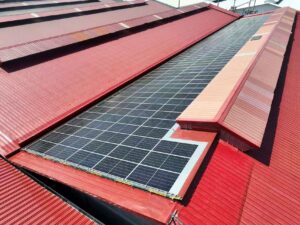
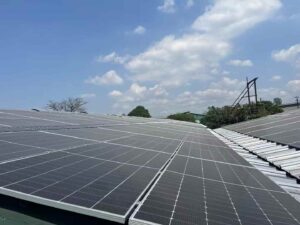
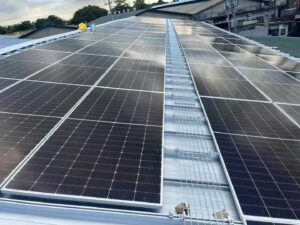
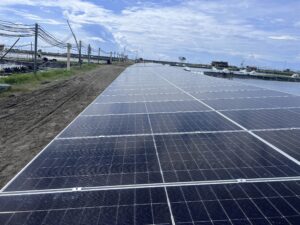
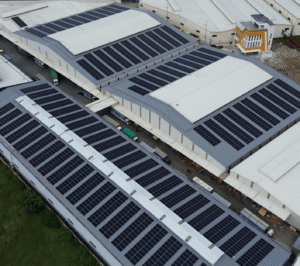
Empowering a sustainable future with cutting-edge solar solutions, First Power Solar Inc. is committed to delivering reliable and efficient renewable energy for businesses
Get updates on special events, news & trends